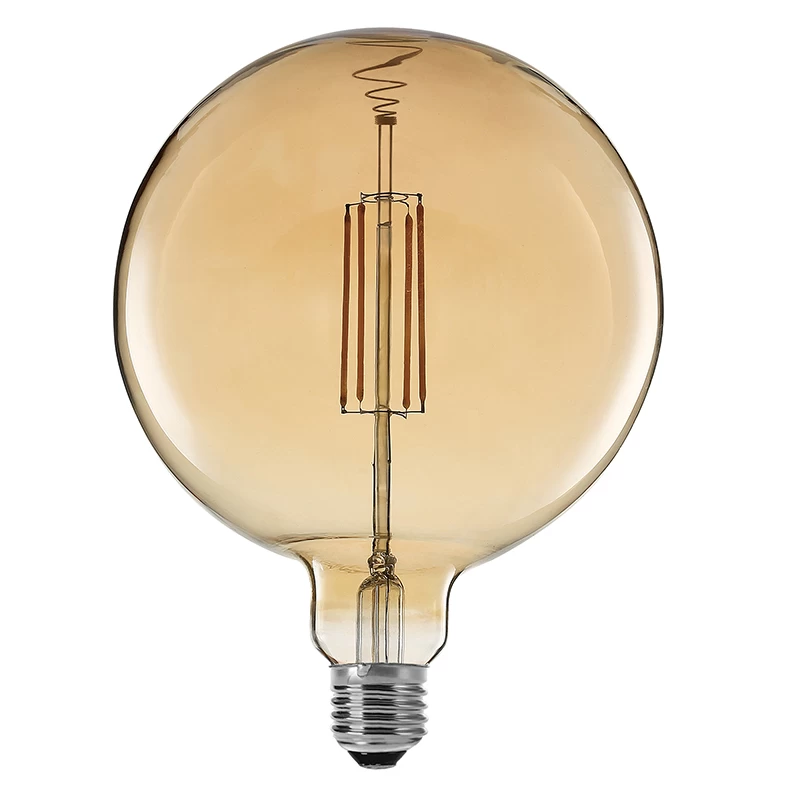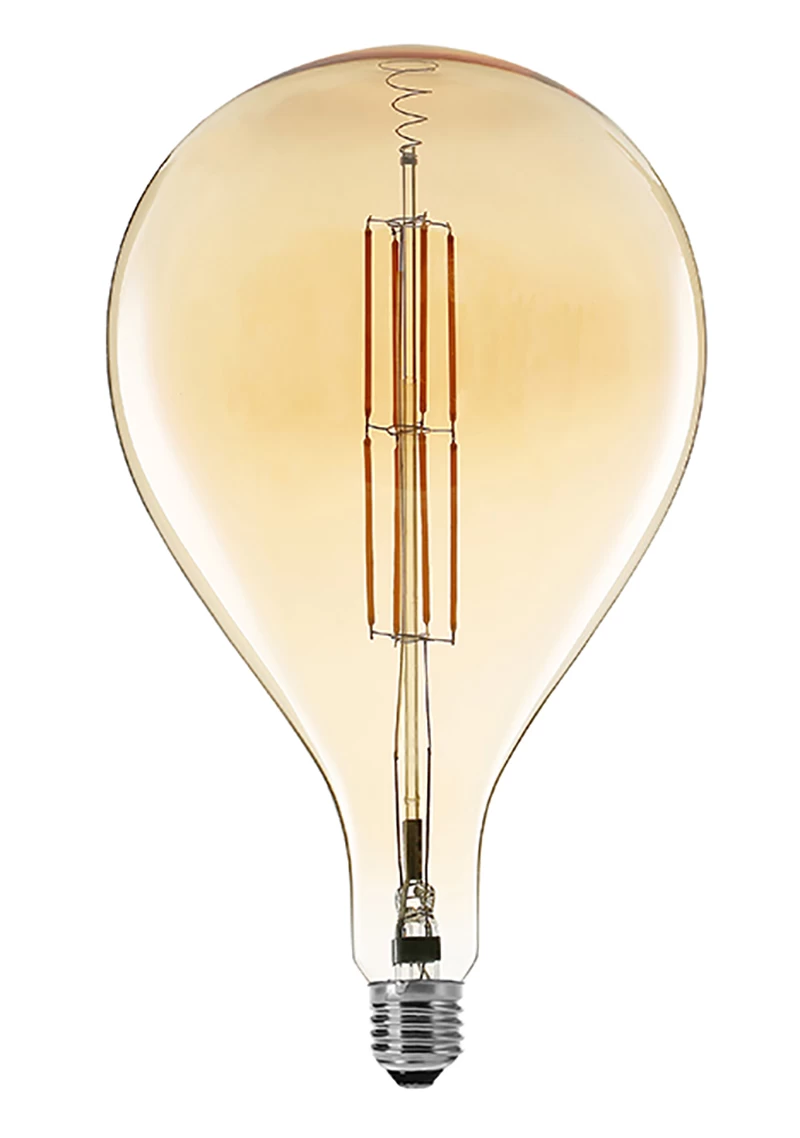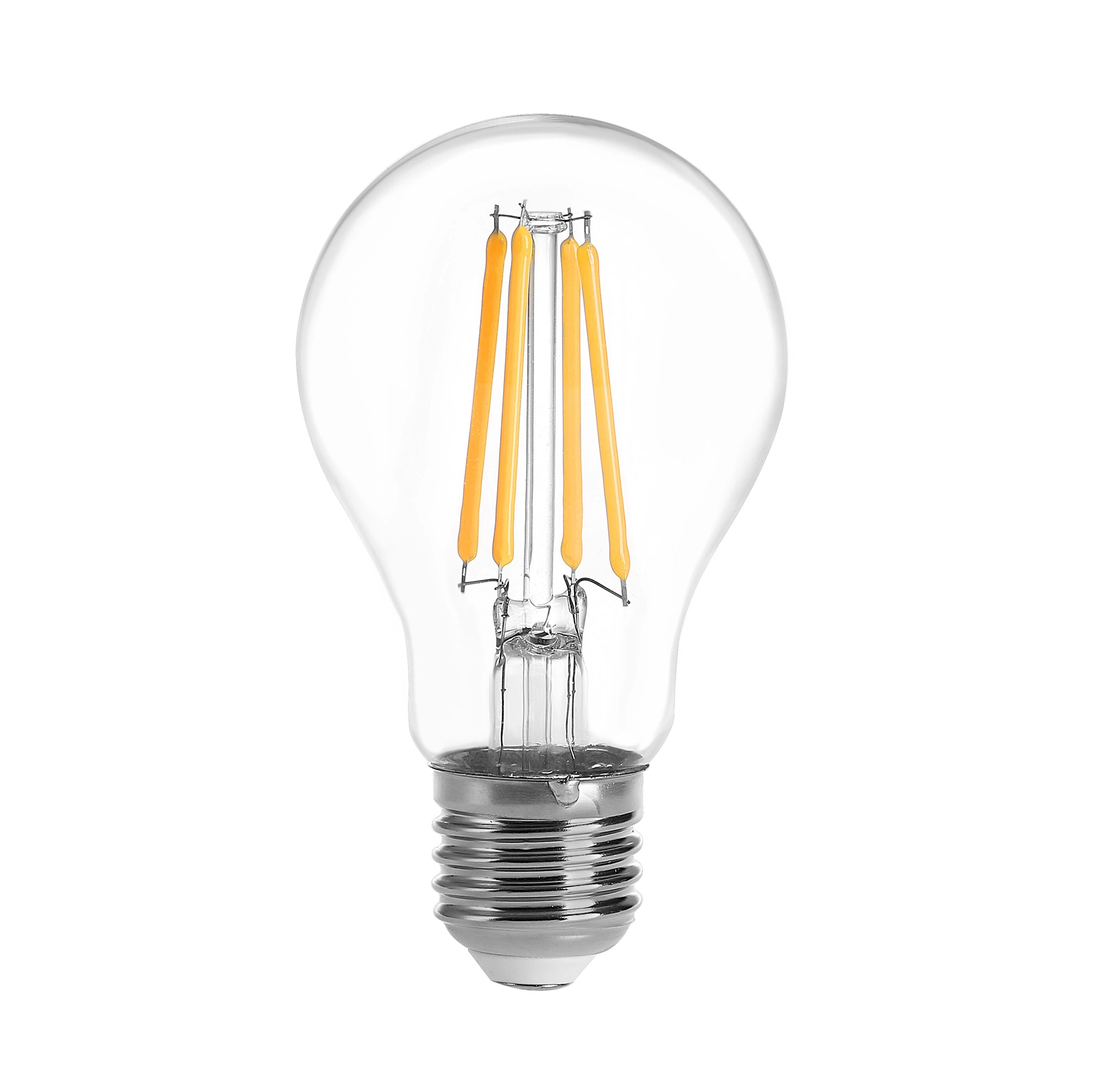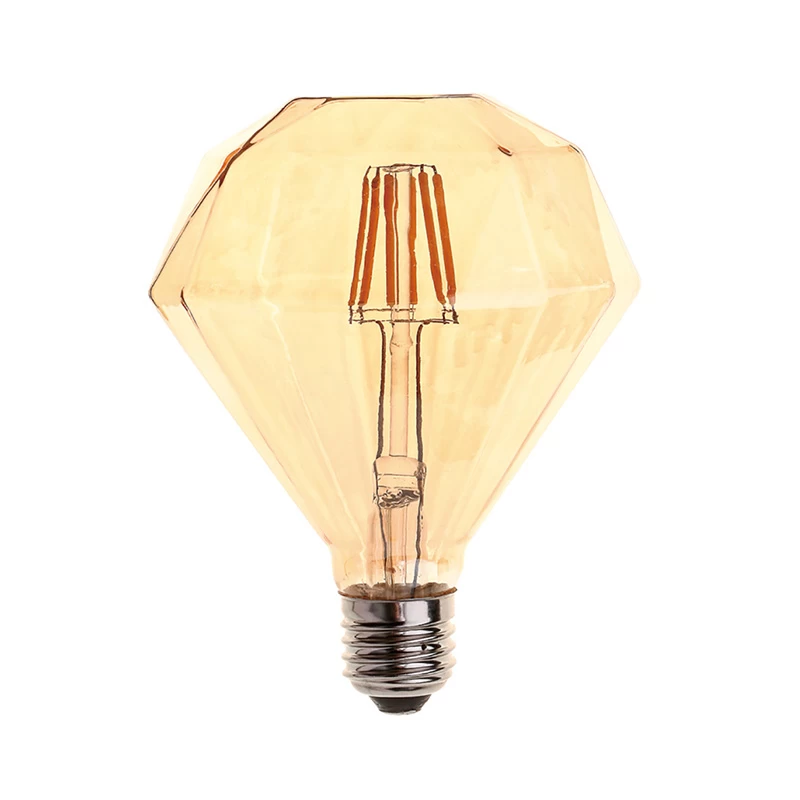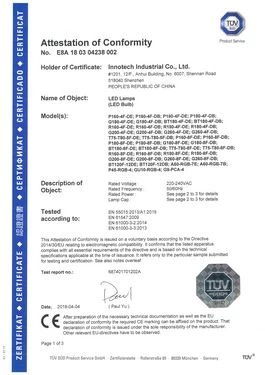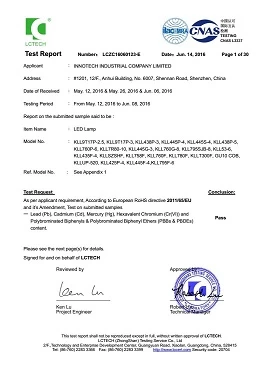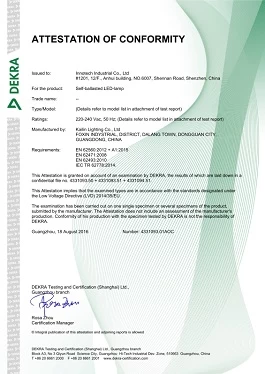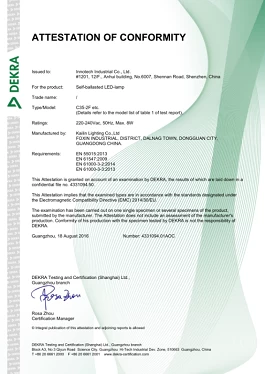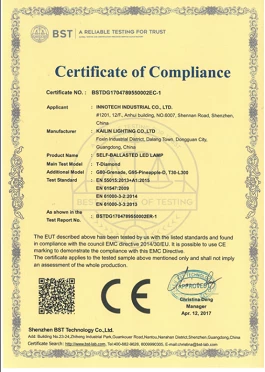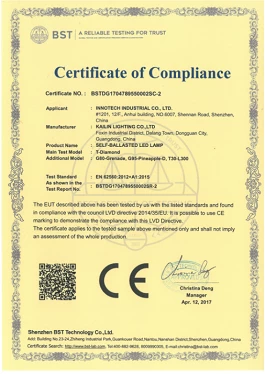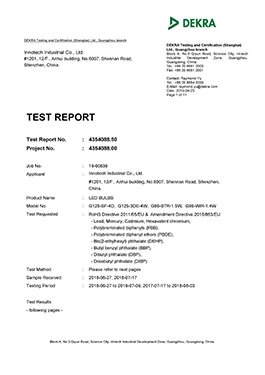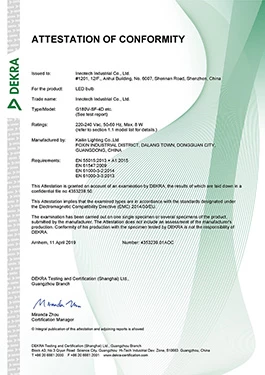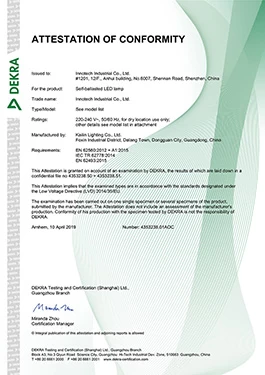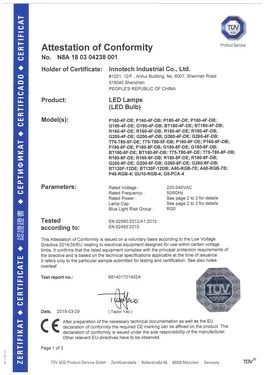Here are a few things to consider when choosing LED light bulbs...
Efficiency, Colour Temperature, Colour Rendering, Heat Output, lifetime, etc.
Micro-LED will miss TV applications due to technical difficulty
Innotech
Innolite
2018-04-03 11:27:27
Compared to OLED, Micro-LED technology is still relatively unfamiliar to many people, but the concern is getting higher and higher. Micro LED technology, namely LED microfabrication and matrix technology. Refers to an array of high-density, tiny-size LEDs integrated on a single chip. For example, each pixel of the LED display(dimmable LED light bulbs) can be addressed and driven individually to light up. This can be seen as a miniature version of the outdoor LED display, with pixel distances from millimeters. Grade is reduced to micron level. The Micro LED display is a low-level LED display driver circuit fabricated using a normal CMOS integrated circuit manufacturing process, and then an MOCVD machine is used to fabricate an LED array on the integrated circuit, thereby realizing a micro display screen, that is, an LED display. A smaller version of the screen.
Micro-LED will miss TV applications due to technical difficulty
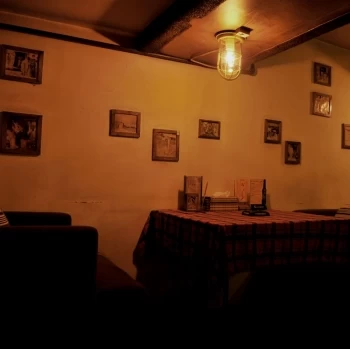 AUO will use mini LED backlight chips in 2018, but this will not immediately affect the development of Micro-LED applications. Peng Shuanglang, chairman of AU Optronics, said that the Micro-LED commercialization path is still very long.
AUO will use mini LED backlight chips in 2018, but this will not immediately affect the development of Micro-LED applications. Peng Shuanglang, chairman of AU Optronics, said that the Micro-LED commercialization path is still very long.
AUO was once a shareholder of the Micro-LED developer. In 2014, LuxVue was acquired by Apple. Therefore, AU Optronics is the leader of Micro-LED manufacturer in Taiwan, Peng Shuanglang said.
The development of Micro-LED technology is difficult because it involves different fields such as precision machinery, semiconductors, testing and testing, and many breakthroughs are needed. It will still be in development from 2018 to 2019, but many product samples are expected to come out.
Prior to mass production, Micro-LEDs must prove to be feasible and it will take a long time before they can be commercialized.
The mini LED technology (LED Panel Downlight manufacturer china)makes the chip in the backlight control board more compact. An LED control board of the notebook computer contains approximately 6,000 to 7,000 mini LED backlights, but it has better brightness, chroma, and contrast than the current one.
However, mini LED backlight modules require higher costs and therefore are less likely to be used in cheap products, such as laptops in the $500 range, said Peng Shuanglang. But they can be used in high-end applications markets, such as gaming laptops and professional display markets that cost more than $1,000.
For Micro-LEDs, it is unlikely to be used for television due to the challenges of huge transfer technology.
Micro-LED is of great significance to the TFT-LCD and LED industry in Taiwan, China, because it indicates a milestone in the local display industry.Compared to OLED, Micro-LED technology is still relatively unfamiliar to many people, but the concern is getting higher and higher. Micro LED technology, namely LED microfabrication and matrix technology. Refers to an array of high-density, tiny-size LEDs integrated on a single chip. For example, each pixel of the LED display can be addressed and driven individually to light up. This can be seen as a miniature version of the outdoor LED display, with pixel distances from millimeters. Grade is reduced to micron level. The Micro LED display is a low-level LED display driver circuit fabricated using a normal CMOS integrated circuit manufacturing process, and then an MOCVD machine is used to fabricate an LED array on the integrated circuit, thereby realizing a micro display screen, that is, an LED display. A smaller version of the screen.
Micro-LED will miss TV applications due to technical difficulty
AUO will use mini LED backlight chips in 2018, but this will not immediately affect the development of Micro-LED applications. Peng Shuanglang, chairman of AU Optronics, said that the Micro-LED commercialization path is still very long.
AUO was once a shareholder of the Micro-LED developer. In 2014, LuxVue was acquired by Apple. Therefore, AU Optronics is the leader of Micro-LED manufacturer in Taiwan, Peng Shuanglang said.
The development of Micro-LED technology is difficult because it involves different fields such as precision machinery, semiconductors, testing and testing, and many breakthroughs are needed. It will still be in development from 2018 to 2019, but many product samples are expected to come out.
Prior to mass production, Micro-LEDs must prove to be feasible and it will take a long time before they can be commercialized.
The mini LED technology makes the chip in the backlight control board more compact. An LED control board of the notebook computer contains approximately 6,000 to 7,000 mini LED backlights, but it has better brightness, chroma, and contrast than the current one.
However, mini LED backlight modules require higher costs and therefore are less likely to be used in cheap products, such as laptops in the $500 range, said Peng Shuanglang. But they can be used in high-end applications markets, such as gaming laptops and professional display markets that cost more than $1,000.
For Micro-LEDs, it is unlikely to be used for television due to the challenges of huge transfer technology.
Micro-LED is of great significance to the TFT-LCD and LED industry in Taiwan, China, because it indicates a milestone in the local display industry.
Micro-LED will miss TV applications due to technical difficulty

AUO was once a shareholder of the Micro-LED developer. In 2014, LuxVue was acquired by Apple. Therefore, AU Optronics is the leader of Micro-LED manufacturer in Taiwan, Peng Shuanglang said.
The development of Micro-LED technology is difficult because it involves different fields such as precision machinery, semiconductors, testing and testing, and many breakthroughs are needed. It will still be in development from 2018 to 2019, but many product samples are expected to come out.
Prior to mass production, Micro-LEDs must prove to be feasible and it will take a long time before they can be commercialized.
The mini LED technology (LED Panel Downlight manufacturer china)makes the chip in the backlight control board more compact. An LED control board of the notebook computer contains approximately 6,000 to 7,000 mini LED backlights, but it has better brightness, chroma, and contrast than the current one.
However, mini LED backlight modules require higher costs and therefore are less likely to be used in cheap products, such as laptops in the $500 range, said Peng Shuanglang. But they can be used in high-end applications markets, such as gaming laptops and professional display markets that cost more than $1,000.
For Micro-LEDs, it is unlikely to be used for television due to the challenges of huge transfer technology.
Micro-LED is of great significance to the TFT-LCD and LED industry in Taiwan, China, because it indicates a milestone in the local display industry.Compared to OLED, Micro-LED technology is still relatively unfamiliar to many people, but the concern is getting higher and higher. Micro LED technology, namely LED microfabrication and matrix technology. Refers to an array of high-density, tiny-size LEDs integrated on a single chip. For example, each pixel of the LED display can be addressed and driven individually to light up. This can be seen as a miniature version of the outdoor LED display, with pixel distances from millimeters. Grade is reduced to micron level. The Micro LED display is a low-level LED display driver circuit fabricated using a normal CMOS integrated circuit manufacturing process, and then an MOCVD machine is used to fabricate an LED array on the integrated circuit, thereby realizing a micro display screen, that is, an LED display. A smaller version of the screen.
Micro-LED will miss TV applications due to technical difficulty
AUO will use mini LED backlight chips in 2018, but this will not immediately affect the development of Micro-LED applications. Peng Shuanglang, chairman of AU Optronics, said that the Micro-LED commercialization path is still very long.
AUO was once a shareholder of the Micro-LED developer. In 2014, LuxVue was acquired by Apple. Therefore, AU Optronics is the leader of Micro-LED manufacturer in Taiwan, Peng Shuanglang said.
The development of Micro-LED technology is difficult because it involves different fields such as precision machinery, semiconductors, testing and testing, and many breakthroughs are needed. It will still be in development from 2018 to 2019, but many product samples are expected to come out.
Prior to mass production, Micro-LEDs must prove to be feasible and it will take a long time before they can be commercialized.
The mini LED technology makes the chip in the backlight control board more compact. An LED control board of the notebook computer contains approximately 6,000 to 7,000 mini LED backlights, but it has better brightness, chroma, and contrast than the current one.
However, mini LED backlight modules require higher costs and therefore are less likely to be used in cheap products, such as laptops in the $500 range, said Peng Shuanglang. But they can be used in high-end applications markets, such as gaming laptops and professional display markets that cost more than $1,000.
For Micro-LEDs, it is unlikely to be used for television due to the challenges of huge transfer technology.
Micro-LED is of great significance to the TFT-LCD and LED industry in Taiwan, China, because it indicates a milestone in the local display industry.

 +
+




